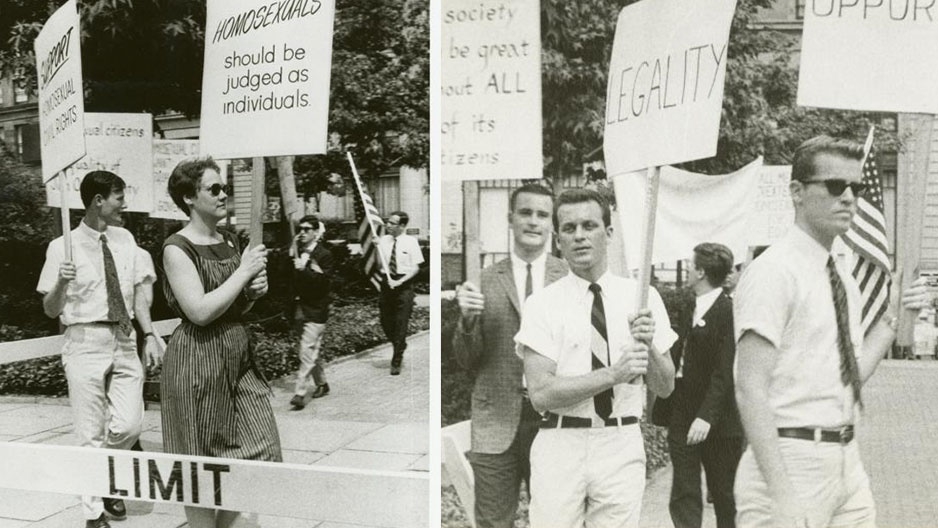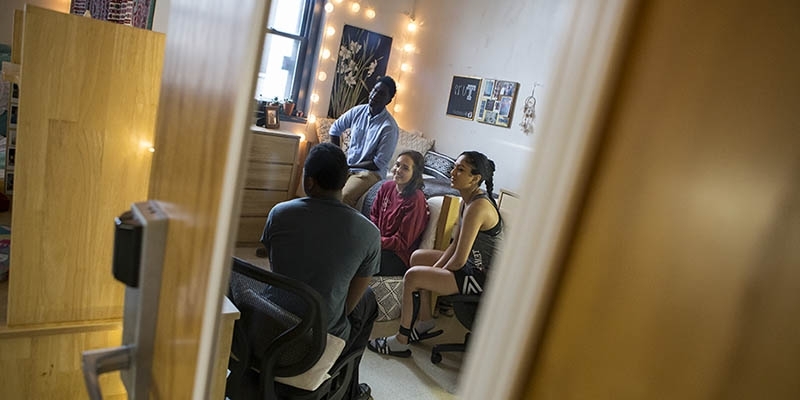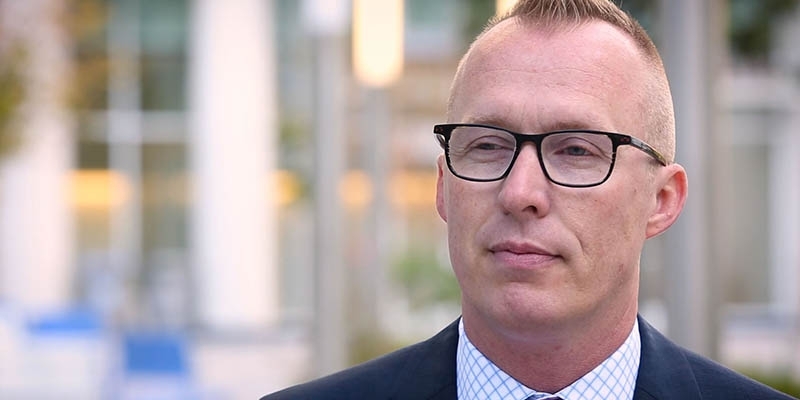The idea of Pride is thought to have started in Philadelphia, says professor
To celebrate Pride Month, Associate Professor Brad Windhauser discusses the Annual Reminders, Philadelphia’s first Pride parade and why our rainbow flag is different from other cities.

If you’ve visited City Hall, or just passed by it in the last couple weeks, maybe you noticed a colorful neighbor to our nation’s flag—the rainbow flag.
It’s been a symbol of pride and unity for the LGBTQIA+ community since 1978 (it’s a little different in Philadelphia as of last year—more on that later) and the flag is raised at City Hall every June to celebrate Pride Month.
Temple Now talked with Associate Professor of English and Lesbian, Gay, Bisexual and Transgender Studies Brad Windhauser to dig deeper into LGBTQIA+ history in Philadelphia and why the idea of Pride is thought to have started here.
TN: There’s a historical marker at 6th and Chestnut streets commemorating gay rights demonstrations on July 4, 1965–1969. What happened there?
Windhauser: Those demonstrations are more commonly known as the Annual Reminders. In order to get the real genesis of the Annual Reminders, you’d have to go back to Sen. Joseph McCarthy and the Red Scare. He played into the idea of the fear and paranoia around Communism and eventually turned his attention to gay people, specifically gay people who were working with the federal government. The thinking was that gay people were more susceptible to manipulation from other countries because of their sexuality. So, the tail end of the Red Scare became knowns as the Lavender Scare, and hundreds of people were fired from their jobs.
In 1953, President Eisenhower signed Executive Order 10450, which made it illegal for gay people to work for the government, and other states had explicit anti-gay laws, too.
Gay people were seen as dangerous, and they weren’t allowed to gather in public. If more than one person would be seen together at say, a bar, it would be seen as a gay establishment and be shut down and the patrons would be arrested. By the time we get to the 1960s, more people did not want to accept what was happening, and the Homophile Movement (organizations working together to demand equality and respect, regardless of a person’s gender identity or sexual orientation) wanted to gain traction.
Two key organizations, Daughters of Bilitis and the Mattachine Society, wanted to do something, and they decided to take action in Philadelphia specifically because they wanted to advocate for equal rights in front of Independence Hall and the Liberty Bell. That’s why the demonstrations or protests were called the Annual Reminders because they wanted to remind everyone of our country’s promise of equal rights and the pursuit of happiness. The goal was that in Philadelphia, July 4 is associated with freedom, but there would be a lot of tourists, so more people would see that gay people don’t look like the screaming, loud queen or butch lesbian stereotypes.
The first protest was on July 4, 1965. About 40 people showed up, 33 men and seven women. It was a dangerous time to be out and advocating like this as the Americans Psychological Association still listed homosexuality as a mental illness. The group made signs, but remained silent, and there was a strict dress code. They wore what we would now call conservative dress, but back then it was considered "normal drag." The idea was to wear stereotypically-gendered outfits so men wore slacks and buttons downs, the women wore dresses.
TN: Why did the Annual Reminders end in 1969?
Windhauser: It was the fifth year for the reminders and it was just a few weeks after the Stonewall Riots in New York City. The owner of the Oscar Wilde Bookstore in New York knew what was going on in Philadelphia and bussed 30 activists to Philadelphia to get involved with the Annual Reminders.
There was some friction between groups, though. The people from New York weren’t interested in putting on what they thought were oppressive uniforms. They were wearing jeans. They were being very loud and vocal. They were holding hands and showing affection, which was seen as being very against the original group’s purpose, because they were worried that the mainstream would be put off by that, but the people from New York weren’t having it.
So, 1969 was the last year that the Annual Reminders happened because when we get to 1970 what we know now as the first gay pride parade was organized for New York and that galvanized the community—all attention went to that, but the Annual Reminders are thought to have sparked the idea of pride.
TN: What was the first gay pride parade like in Philadelphia like?
Windhauser: It was in 1972 and stretched from Rittenhouse Square to Independence Hall. A lot of smaller cities were watching to see how the first parade went in New York in 1970. That went well, so other cities, like Philadelphia, thought “we can try now, too.” Of course, it was a lot less flashy and more like people marching with banners rather than a parade. The biggest difference between the Annual Reminders and the pride parade is when everyone got to Independence Hall, people were giving speeches about being out and being visible. It was definitely a celebration as opposed to just being a political rally.
TN: Some people say that Rittenhouse Square was a focal point in LGBTQIA+ history.
Windhauser: Well, Rittenhouse Square used to be a rough part of town. Historically, anytime that we have a gayborhood or a place where gay people gather, they were located in less desirable places. They were places no one would be watching. Also, one of the early after-hours clubs, which is now the Black Sheep, I believe, was near the square before it moved into what is now Voyeur.
TN: Fast forward to 2017 and Philadelphia’s rainbow flag.
Windhauser: We’re the first city to add a brown and black stripe to make the flag more inclusive to all members of the LGBTQIA+ community. The flag has alway been a symbol of our community, and for some people, that symbol has been a limited space. Also, for a group who has fought so hard for inclusion, we can be pretty bad at it within our own community.
TN: Any Owls come to mind when you think about Pride Month?
Windhauser: The late Edith Windsor, CLA ’50. She was a gay-rights activist whose landmark Supreme Court case dismantled the Defense of Marriage Act in 2013.


